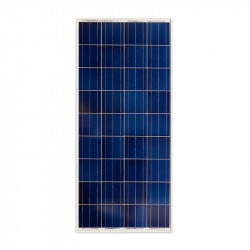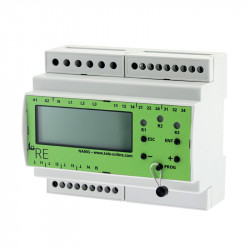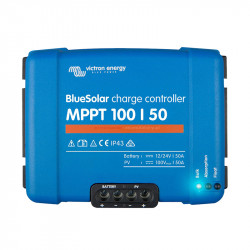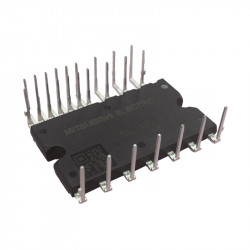-
вернутьсяX
-
Компоненты
-
-
Category
-
Полупроводниковые приборы
- Диоды
- Тиристоры
-
Электро-изолированные модули
- Электроизолированные модули | ВИШАЙ (ИК)
- Электроизолированные модули | INFINEON (EUPEC)
- Электроизолированные модули | Семикрон
- Электроизолированные модули | POWEREX
- Электроизолированные модули | IXYS
- Электроизолированные модули | ПОЗЕЙКО
- Электроизолированные модули | ABB
- Электроизолированные модули | TECHSEM
- Перейти в подкатегорию
- Выпрямительные мостики
-
Транзисторы
- Транзисторы | GeneSiC
- Модули SiC MOSFET | Mitsubishi
- Модули SiC MOSFET | STARPOWER
- Модули ABB SiC MOSFET
- Модули IGBT | МИЦУБИСИ
- Транзисторные модули | MITSUBISHI
- Модули MOSFET | МИЦУБИСИ
- Транзисторные модули | ABB
- Модули IGBT | POWEREX
- Модули IGBT | INFINEON (EUPEC)
- Полупроводниковые элементы из карбида кремния (SiC)
- Перейти в подкатегорию
- Драйвера
- Блоки мощности
- Перейти в подкатегорию
- Электрические преобразователи
-
Пассивные компоненты (конденсаторы, резисторы, предохранители, фильтры)
- Резисторы
-
Предохранители
- Миниатюрные предохранители для электронных плат серии ABC и AGC
- Быстрые трубчатые предохранители
- Медленные вставки с характеристиками GL/GG и AM
- Ультрабыстрые плавкие вставки
- Быстрые предохранители английский и американский стандарт
- Быстрые предохранители европейский стандарт
- Тяговые предохранители
- Высоковольтные предохранительные вставки
- Перейти в подкатегорию
-
Конденсаторы
- Конденсаторы для электромоторов
- Электролитические конденсаторы
- Конденсаторы типа snubbers
- Конденсаторы мощности
- Конденсаторы для цепей DC
- Конденсаторы для компенсации пассивной мощности
- Высоковольтные конденсаторы
- Конденсаторы большой мощности для индукционного нагрева
- Импульсные конденсаторы
- Конденсаторы звена постоянного тока
- Конденсаторы для цепей переменного/постоянного тока
- Перейти в подкатегорию
- Противопомеховые фильтры
- Ионисторы
-
Защита от перенапряжения
- Ограничители перенапряжения для приложений RF
- Ограничители перенапряжения для систем технического зрения
- Ограничители перенапряжения для линий электропередач
- Ограничители перенапряжения для светодиодов
- Ограничители перенапряжения для фотовольтаики
- Ограничители перенапряжения для систем взвешивания
- Ограничители перенапряжения для Fieldbus
- Перейти в подкатегорию
- Перейти в подкатегорию
-
Реле и контакторы
- Теория реле и контакторы
- Полупроводниковые реле AC 3-фазные
- Полупроводниковые реле DC
- Контроллеры, системы управления и аксессуары
- Системы плавного пуска и реверсивные контакторы
- Электро-механические реле
- Контакторы
- Оборотные переключатели
-
Полупроводниковые реле AC 1-фазные
- РЕЛЕ AC 1-ФАЗНЫЕ СЕРИИ 1 D2425 | D2450
- Однофазное реле AC серии CWA и CWD
- Однофазное реле AC серии CMRA и CMRD
- Однофазное реле AC серии PS
- Реле AC двойное и четверное серии D24 D, TD24 Q, H12D48 D
- Однофазные твердотельные реле серии gn
- Однофазные полупроводниковые реле переменного тока серии ckr
- Однофазные реле переменного тока ERDA И ERAA SERIES для DIN-рейки
- Однофазные реле переменного тока на ток 150А
- Двойные твердотельные реле, интегрированные с радиатором для DIN-рейки
- Перейти в подкатегорию
- Полупроводниковые реле AC 1-фазные для печати
- Интерфейсные реле
- Перейти в подкатегорию
- Индукционные компоненты
- Радиаторы, варисторы, термическая защита
- Вентиляторы
- Кондиционеры, оборудование для шкафов, охладители
-
Аккумуляторы, зарядные устройства, буферные источники питания и инверторы
- Аккумуляторы, зарядные устройства - теоретическое описание
- Модульные литий-ионные аккумуляторы, пользовательские батареи, Система управления батареями (BMS)
- Аккумуляторы
- Зарядные устройства и аксессуары
- Резервный источник питания ИБП и буферные источники питания
- Преобразователи и аксессуары для фотовольтаики
- Хранилище энергии
- Топливные элементы
- Литий-ионные аккумуляторы
- Перейти в подкатегорию
-
Автоматика
- Futaba Drone Parts
- Концевые выключатели, Микровыключатели
- Датчики Преобразователи
- Пирометры
- Счетчики, Реле времени, Панельные измерительные приборы
- Промышленные защитные устройства
- Световые и звуковые сигнальные установки
- Термокамеры, Тепловизоры
- LED-экраны
- Управляющая аппаратура
-
Регистраторы
- Регистраторы температуры с записью на ленту и с цифровым показателем - AL3000ym - AL3000
- Микропроцесорные регистраторы с экраном LCD серия KR2000
- Регистратор KR5000
- Измеритель с функцией регистрации влажности и температуры HN-CH
- Эксплуатационные материалы для регистраторов
- Компактный графический регистратор 71VR1
- Регистратор KR 3000
- Регистратор PC серии R1M
- Регистратор PC серии R2M
- Регистратор PC, USB, 12 изолированных входов – RZMS
- Регистратор PC, USB, 12 изолированных входов – RZUS
- Перейти в подкатегорию
- Перейти в подкатегорию
-
Провода, литцендрат, гофрированные рукава, гибкие соединения
- Провода
- Многожильные провода (Lica)
-
Кабели и провода для специальных применений
- Удлинительные и компенсационные провода
- Провода для термопар
- Присоединительные провода для датчиков PT
- Многожильные провода темп. от -60C до +1400C
- Провода среднего напряжения
- Провода зажигания
- Нагревательные провода
- Одножильные провода темп. от -60C до +450C
- Железнодородные провода
- Нагревательные провода в Ex
- Перейти в подкатегорию
- Оболочки
-
Плетеные кабели
- Плоские плетеные кабели
- Круглые плетеные кабели
- Очень гибкие плетеные кабели - плоские
- Очень гибкие плетеные кабели - круглые
- Медные цилиндрические плетеные кабели
- Медные цилиндрические плетеные кабели и кожуха
- Гибкие заземляющие ленты
- Цилиндрические плетеные провода из луженой и нержавеющей стали
- Медные изолированные плетеные провода PCV - температура до 85 градусов C
- Плоские алюминиевые плетеные провода
- Соединительный набор - плетеные провода и трубки
- Перейти в подкатегорию
- Аксессуары для тяги
- Кабельные наконечники
- Изолированные эластичные шины
- Многослойные гибкие шины
- Системы прокладки кабеля (PESZLE)
- Трубы
- Перейти в подкатегорию
- Просмотреть все категории
-
Полупроводниковые приборы
-
-
- Поставщики
-
Программы
- Energy bank
- Автоматика HVAC
- Горное дело, металлургия и литейное дело
- Двигатели и трансформаторы
- Измерение и регулирование температуры
- Измерение и регулирование температуры
- Индукционный нагрев
- Индустриальная автоматизация
- Источники питания (ИБП) и выпрямительные системы
- Компоненты для потенциально взрывоопасных сред (EX)
- Машины для сушки и обработки древесины
- Машины для термоформования пластмасс
- Оборудование для распределительных, контрольных и телекоммуникационных шкафов
- Печать
- Приводы переменного и постоянного тока (инверторы)
- Промышленная автоматика
- Промышленные защитные устройства
- Сварочные аппараты и сварочные аппараты
- Станки с ЧПУ
- Трамвай и ж / д тяга
-
Монтаж
-
-
Индукторы
-
-
Индукционные устройства
-
-
https://www.dacpol.eu/pl/naprawy-i-modernizacje
-
-
Услуга
-
- Контакт
- Zobacz wszystkie kategorie
Alternative energy sources

Renewable energy sources or alternative energy sources are natural resources, which usage does not cause shortages - they are not dangerous to the environment, regenerate quickly, and their extraction does not emit hazardous substances. Similarly, renewable energy is an electric or heat energy that is emission-free and not causing any shortages.
Non-renewable energy sources - i.e. mining resources e.g. coal, oil, natural gas. The name “non-renewable” can be however misleading, because there is a possibility to restore these materials, but the time of their recovery exceeds the speed of their exploitation. Additionally, their usage has a negative effect on the natural environment, people’s health and economic situation in the world.
Types and application of renewable energy sources
All renewable sources are a part of so-called green/clean energy - natural, usually easily accessed and cheap if we own a proper technology and a method of extraction. Using alternative energy sources can be beneficial not only for the environment, but also provides companies with lower costs of production and power supply, maintenance, and guarantees safety and a stable source of power for the future in the world, which inevitably leads to change from traditional energy sources, and the penalties for polluting the earth and breaking international ecology norms are becoming a common practice. Renewable energy sources are not only huge wind or solar farms, but also small and simple solutions for homes and production facilities, often single devices based on wireless operation.
Solar energy - photovoltaic plants
Solar energy is used in two ways - for producing energy and heat. Electric energy is acquired through the usage of solar collectors, which absorb sun energy, then in a form of heat transfer it to the installation, where it’s converted to the energy possible for use in practice. Heat energy however is acquired through a method called photovoltaics - by installing cells made of semiconductor material (mostly silicon), thanks to which they gain sun radiation energy and convert it into direct current.
Solar energy is used in production companies, daily-usage applications, industrial power plants and is also applied at homes - solar panels are possibly the most economical and cheap solution for houses and companies.
Principle of operation:
Solar micro-inverter - works based on the DSCs controller, which provides off-grid and on-grid inverter operation. It is integrated with a battery management system, with an inversion circuit and transmitters. Typical solar systems in homes include solar panels, solar controllers, batteries, DC-AC solar inverters. During the day panels collect solar energy, which is converted into electric/heat energy and powers up batteries to use gathered sources at night.
Wind power - wind energy plants - To acquire wind energy we have to use special wind turbines, which create wind farms and convert the wind movement power to electric energy. A Wind turbine is composed of 3 main elements: a tower, moving gondola and a rotor. Wind and solar energy in recent years became two of the most often used and fastest developing energy producing methods.
Hydropower - hydropower plants (using gravitation power of water e.g. drifts in rivers)
Hydropower plants acquire energy due to the usage of water flow power. Various systems of couplings, dams, turbines and streams generate kinetic energy from water flow and eventually convert it to electric power. Hydropower is also an energy of drifts and streams, based on using regular and natural changes in the level of oceans and seas.
Bioenergy/biomass - biofuel (e.g. derived from plants)
Renewable energy can also use substances derived from plants or animals, which go through a process of biodegradation and create so-called biomass. The Key element is the photosynthesis process and converting biomass in the process of solar energy burning to the ready to use energy. We distinguish a few types of biomass: solid (e.g. wood, plants), liquid (biofuel e.g. from canola) and gas (biogas).
Geothermal energy - geothermal plants using Earth’s heat energy
Geothermal - energy inside Earth - uses water and stone heat located under the surface. Acquiring geothermal energy is one of the most difficult methods, because sources are often located deep under the ground (even up to several kilometers deep). Renewable sources of this type are extracted with special bores, from which is collected hot water or steam, which then in a geothermal plant is converted to ready for use energy.
Why should you invest in renewable energy sources?
Committing to the development of renewable energy technologies is undoubtedly one of the best investment decisions, providing long-term benefits not only for the environment, but also businesses and manufacturing institutions.
Renewable energy sources guarantee:
Power supply stability - renewable sources do not lower the levels of natural resources and do not pose a threat of their shortage, also provide price stability and a variety of available energy sources.
- Power supply independence - no need to import resources from other countries.
- Low costs of power
- Low costs of acquiring materials - low power costs that are needed for production processes.
- Limiting CO2 emission
- Environment protection - limiting the level of emission of dangerous substances, environmental degradation, natural sources shortage.
- Clean and more efficient factories - safe, clean and healthy work conditions.
Climate changes – environmental, economic and social effects
Global warming and too much rainfall - climate warming causes hard to reverse effects such as glacier melting and increased level of oceans and seas. Recently, we discovered how critically high is the water pollution with waste, which is the cause of death of countless animals and ecosystems.
Due to the many-year polluting and ignoring global warming issue and pollution of water, there are already irreversible changes in the natural environment, for which it is already too late for us to be able to recover them.
High CO2 emission has already crossed all safety norms, and further damage can only be slowed down or limited throughout next decades of hard work on changing our current way of living. Thanks to the developing technologies and increasing awareness there is a chance for decreasing emission and saving our health and environment from global natural crisis.
Droughts - dry and cracked ground, winter without snow, extremely hot summer, rapid rainfalls, and then droughts - all of it leads to soil degradation and outbreak of hard to put out fires, as well as creation of smog, which for years has been one of the most frequent causes of illnesses and deaths.
Shortage of energy sources - the increase in the usage of fossil fuels leads to extraction from other sources in more and more hard to reach locations e.g. in the Arctic and leads to further degradation and human interference in the environment. It also contributes to the creation of conflicts - fuel sources are not located equally and due to the increasing shortage there's more competition and battles conflicts over available energy sources and ways to acquire them.
Non-renewable energy sources also create many social conflicts, such as numerous fatal accidents and injuries on drilling platforms or mines; oil leakage to seas and oceans; floods and higher levels of water and the necessity to leave homes e.g. Venice. They cause many health issues i.e. faster spread of infectious diseases (malaria, COVID-19); smog accumulation and breathing in the products of burning coal, dust, heavy metals, that are eventually a cause of cancers; more cases of asthma and other respiratory disorders. Due to the decreasing benefits of non-renewable sources there are also struggles on the job markets - job reduction, which could be replaced with new positions in sectors of renewable energy and new technologies.
Связанные продукты
Связанные посты
 Now available – DC/DC converters from PREMIUM
Now available – DC/DC converters from PREMIUM
 New release in DACPOL lighting for lathes – Kira covers
New release in DACPOL lighting for lathes – Kira covers









Оставить комментарий